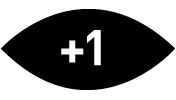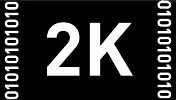

Snowpiercer is the first English language film from acclaimed South Korean director Bong Joon-ho (Memories of Murder, The Host, Mother). Based on the French graphic novel Le Transperceneige, it's a dystopian sci-fi action thriller in which Earth has suffered a cataclysmic ice age. The premise, explained right at the top of the film, is that all life on the planet has been destroyed except for a few hundred survivors, who live on a massive train that perpetually races around a globe-encircling track. The train, powered by an inexhaustible engine, runs at a speed so great that it smashes through any accumulated snow and ice (hence the film's title) to complete each circuit of the Earth in exactly one year. Onboard, a strictly-enforced class system exists: the wealthiest passengers live in luxury and excess towards the front of the train, while the poorest live in squalor toward the rear, an arrangement that inevitably breeds unrest and rebellion. It's an intriguing premise that seems perfect for today's apocalypse-obsessed movie audiences, and Bong’s dark, cold visuals and over-the-top depictions of violence should be catnip for comic-book movie fans looking for something a little deeper and more serious than the next installment of X-Men or Captain America.
Unfortunately, Snowpiercer is no more substantive or satisfying than the typical high-concept Hollywood blockbuster about the end of the world. Though the film purports to be an intelligent allegory for our times, its social satire is no more biting or thought-provoking than Neill Blomkamp’s embarrassingly simpleminded Elysium (released about nine month’s earlier)--though its villainous Minister of Justice played by Tilda Swinton is infinitely more entertaining and credible than Jodie Foster’s insipid Defense Secretary in Elysium. Aside from Swinton, Snowpiercer lacks the indelible characters as well as the arresting visuals that distinguish movies like Invasion of the Body Snatchers (1956), Planet of the Apes (1968), The Omega Man (1971), The Road Warrior (1981), Blade Runner (1982), and other classic films of the dystopian-future genre. Snowpiercer feels more like John Boorman’s Zardoz (1974) or Michael Anderson’s Logan's Run (1976), both of which might have seemed in their day like insightful works of politically high-minded science fiction with iconic visuals and concepts, but looked and felt absurdly dated only a decade or so later.
Snowpiercer would feel far more effective if Bong took the time to establish a consistent and believable interplay between the train and the outside world. As it is, the train plows without incident through hostile, frozen tundra except at the precise moments when the narrative requires external disruptions to occur, which they obligingly do, and characters only chance to look out the train's windows at the most opportune times for them to spot something narratively significant approaching them on their journey. Eventually, as a team of revolutionaries fights their way from the rear cars to the front, we learn more about how this remarkable train came into existence. The backstory is satisfactory, and the sequences in some of the train cars, especially a school, a greenhouse, and an aquarium, help bridge the gaps in the story's logic. But by the time our heroes cross through the utterly preposterous nightclub car, all suspension of disbelief goes out the window.
Bong is often lauded as one of today's best visual stylists, but that encomium should confound viewers who haven't seen any of his films besides Snowpiercer. Bong fails to create any tangible sensations of claustrophobia or constant movement, both of which would seem essential to a film like this. The only consistent impression he conveys is of the vehicle’s relentless darkness. He also appears to have only two ways of shooting action sequences, either in slow motion with minimal but exaggerated sound design, which is effectives though hardly groundbreaking, or with the unforgivably amateurish technique in which the camera starts to shake from left to right as soon as fists start flying. While I'm certain that the train car sets built for this film are all a uniform size, they’re shot in a way that makes some cars look much bigger or smaller, an incongruence that prevents us from gaining a proper appreciation for the environment. A clear understanding of cinematic geography is crucial for a thriller that takes place in a confined space (The Lady Vanishes, The Narrow Margin, Das Boot, Darkstar, Dead Calm, Air Force One, Fightplan, Die Hard and The Thing are just a few successful examples). A final disappointment: if nothing else, this movie should have a terrifically fearsome train. But all the exterior shots of it look like mediocre digital models, and when stacked up against cinema's most sinister locomotives, like the one in Andrei Konchalovsky’s Runaway Train (1985), Snowpiercer's looks like a testosterone fueled Thomas the Tank Engine.





